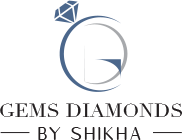The word ‘Cabochon’ is derived from the French word ‘caboche’ and it means ‘head’. A cabochon is a bead or a gem that has been highly polished contrasted with faceted. Cabochons have a rounded form
with a flat reverse, as they are usually shaped in a convex form. Transparent stones are usually faceted,
but opaque gems are usually cut in the mode of cabochons. Softer stones whose hardness is below 7 get
easily scratched and become quickly unattractive. Hence, they are polished in the mode of a cabochon
so that the scratches become less evident.
In the cases of star sapphires and cat’s eye stones, the star of the sapphire or the eye of the cat’s eye
will not be noticeable if they are given faceted cuts. Thus, they are cut as domed cabochons to reveal
the eye or the star. Moreover, cabochons are exclusive and they are something with a vivid difference
from all other gems because the elliptical shape of a cabochon with the dome is considered very
beautiful.
Types of Cabochons
You can get different kinds of cabochons such as glass cabochons, gemstone cabochons, resin
cabochons, glass rhinestone cabochons, acrylic rhinestone cabochons, cat eye cabochons, plastic
cabochons, porcelain cabochons, dichroic glass cabochons, woven cabochons, polymer clay
cabochons, shell cabochons, metal cabochons, millefiori glass cabochons, wooden cabochons and
lampwork cabochons.
All the above kinds of cabochons are available in diverse shapes such as alphabet, human, animal,
rabbit, bear, clothes, vehicle, rectangle, ladybug, beetle, bees, fruit, heart, bottle, bird, flower, tree,
snowflake, umbrella, flat round, duck, mushroom, number, sock, star, frog, drop, square, fish, lip, eye
and numerous other shapes.
How to select a cabochon
First, while selecting a cabochon to be used with a bezel you should investigate the shape and ensure
that the stone has a flat bottom; if not, it may rock from side to side on its backplate. Pearls are
particularly to blame for this. It will be much simpler to work with a flawlessly flat bottom.
Second, you should check the sides of the cabochon. You should observe whether the sides are up and
down in a straight way or they are at an angle toward the top of the stone. The stones that are angled and
have smaller bottoms becoming larger toward the crest will not be suitable for a bezel. The stones that
have straight sides will possibly require being fitted into the bezel using a little glue to grasp them. And
the stones that have broader bottoms gradually becoming narrower toward the top will be trouble-free
to set.
Third, you should investigate the angle of the sides. The same angle will prevail all around a stone that is
well-cut. If you hold the stone at your eye-level, you will be able to verify the angles around it.
Fourth, examine the stone front. An imperfectly cut stone is likely to capture the reflection of an angle
and this will probably damage the cabochon face. The polish should have an even finish throughout the
stone face.
Fifth, you will notice that when a stone is well-cut, there will be a small, virtually imperceptible 45-
degree angle which has been a cut from start to finish of the bottom edge of the cabochon.
Sixth, you should not keep away from a stone because it has highly irregular edges. You may purchase
the uncommon cut to give your imagination a nudge.
Gems Diamonds by Shikha have an unlimited collection of gemstones of a various range that you can
get from us. We offer them in diverse colors, sizes, shapes, and patterns. We can provide you with the gemstones of your choice. Just head on to our shop section and explore the world of cabochons!
Everything you need to know about Cabochons

